Ingrid talks about her method of keeping her horses fresh and involved –
Versatile Basic Training in her wonderful new book,
Training Horses the Ingrid Klimke Way
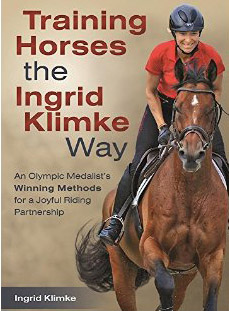
This extract is reproduced with the permission of her publishers, Trafalgar Square
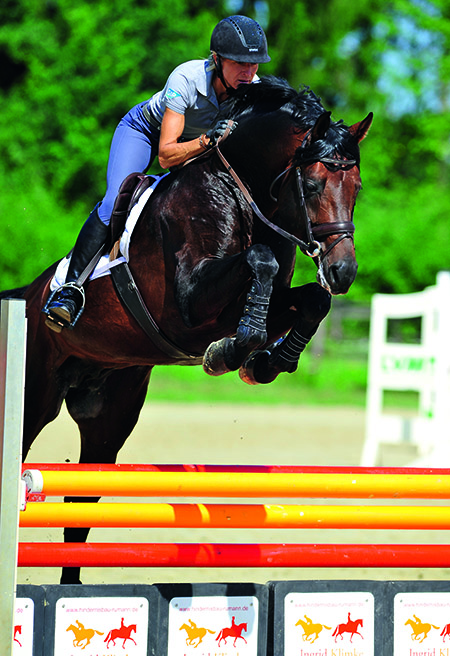
My dressage horse Franziskus jumps with enthusiasm.
It’s very important to me that all my horses experience a fundamental education that is rich in variety and emphasizes versatility, no matter what they will specialize in later – dressage, show jumping, or eventing. Specializing too early harms the horse physically and mentally.
When a young horse is only ridden in one way, he does not develop balanced musculature. In this case, too much is demanded of some muscle groups, which damages the still-growing body. With a versatile basic training plan that includes riding out in the open, work with cavalletti and gymnastic jumping, the demand on muscles, tendons, and joints is more evenly distributed.
The horse will be evenly “gymnasticized.” Instead of overly stressing individual body parts, the goal is to deliberately build up the overall muscling the horse needs. The horse learns to go on different terrain, develop his sense of balance, and become familiar with a variety of sensory stimuli, which all help to cultivate relaxation and strengthen his courage.
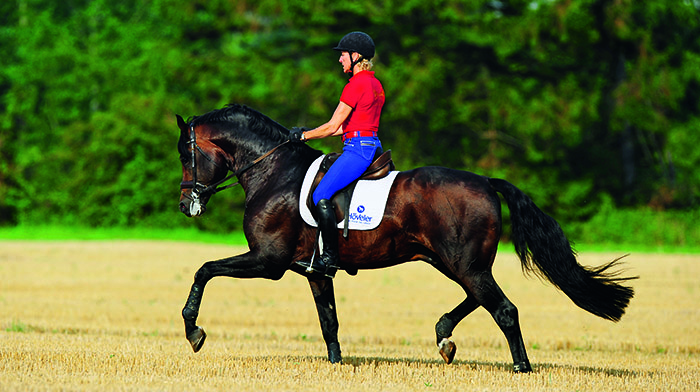
Dressage training in an open field schools the young horse in a variety of ways. Sure-footedness and concentration are developed, while I get movement and impulsion as a ‘gift’ thanks to the environment.
All my young horses are trained in this way. Only after they have this fundamental education behind them will they be trained in a specific discipline, which does not mean that the rich variety of gymnastic activities becomes any less.
In order for the young horse to develop well, he must draw from many positive experiences. Here, too, I achieve optimal results when I ensure variety in the training. So, I quickly discover where my young horse is especially talented, and which tasks he enjoys learning. This allows me to facilitate a targeted sense of achievement for this horse.
A young horse should always be trained in accordance with the Training Scale. This means: rhythm, relaxed suppleness, contact, impulsion, straightness and collection must be developed, step by step. As this takes place, these individual concepts overlap with one another, mutually influencing one another, and cannot be developed in isolation from one another.
From the beginning on, I work on balance and durchlässigkeit, which means willing cooperation on the part of the horse to accept my aids and allow the aids “through” his body. Each stage of training must be diligently carried out and solidified before the next stage can be introduced. Otherwise, I’m missing the fundamentals from which to build.
Or, as Paul Stecken would say, “At some point, the horse will be far up the ladder but unfortunately a few rungs will be missing.” Over the long run , this cannot go well. At the latest, this horse will start having problems when we approach movements involving collection.
continued below advertisement
With finished horses that I acquire, I never know how the foundational training went. This is yet another reason I prefer to start my horses myself, from the beginning.
In my book Basic Training of the Young Horse, you can read in detail about how to correctly train your young horse from backing through age six.
Versatility Training for the Body
Just like the horse, the rider’s training also needs to incorporate variety. Back when my father competed, dressage tests incorporated a small jump to test obedience. This jump was part of the test and, because it was very low, it did not pose a problem for the rider or the horse. But, it set the expectation that both dressage riders and dressage horses should be able to negotiate a small jump. Today, unfortunately, this jump to test obedience is no longer included and, therefore, many dressage riders never experience the sense of elation from jumping over a small fence.
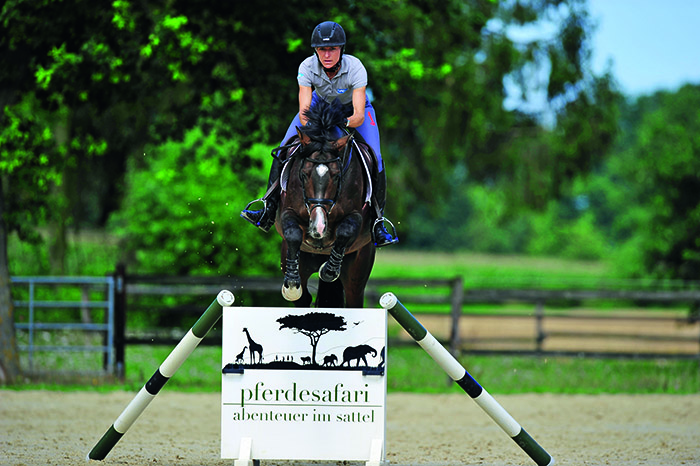
Jumping also develops the rider’s feel for balance.
In my mind, it’s significant that these riders also miss out on one of the most important building blocks of their physical training. Every good rider needs to be balanced and have a seat that is independent from her hands. This is an essential part of knowing how to ride. When a rider plays early on with small jumps or cavalletti without any pressure, as I did in my youth and as my daughters do now, the rider automatically develops good body awareness and a balanced seat.
The same goes for gaining experience by riding out on trails or on a track. My father had a canter track around his dressage arena and used it to loosen up his horses, as well as to work on straight lines.
It was a given that the rider was simultaneously training her body awareness. We didn’t even think about this – it just was. In and of themselves, the various stirrup lengths needed for schooling in dressage, jumping, or riding cross-country provide the rider with various physical experiences, which lead to the development of a balanced, secure, and relaxed seat.
Gaining Knowledge
Paul Stecken always said, “You must first understand what you’re riding – in your mind.”
I can really only execute an exercise properly when I fully understand the theory – why and how I am riding the exercise to begin with. For this, I need the relevant knowledge, which is either imparted to me by my riding instructor, or which I gain by reading books, listening to special lectures, watching DVDs, or attending clinics.
In addition, a basic understanding of the horse’s anatomy is important if I want to understand and relate to how I can ride my horse to promote long-term soundness. I must truly grasp the general needs that horses have. In every instance, I must educate myself, ask questions and observe how other good riders do it. Above all, I must learn to think independently and to always keep my mind awake and attentive.
continued below advertisement
I well remember the theoretical instruction my father gave me, my brother, and the other young riders at our riding association. We had to explain to him how to execute a half-halt or ride a certain movement.
Back then, my father also advised me, “Go to the arena and watch closely how the good riders work with their horses. You can learn a lot and observe many things.” Often, he really did not say much when I rode. “If I’m not saying anything, it’s a good sign,” he told me. In this way, he wanted to guide me toward independence. I needed to determine for myself whether the horse was going well, so I concentrated fully on the horse and not on my dad. He only corrected me if something didn’t seem right to him. After a successful test, he always praised me.
Afterward, we would go over the elements of the test or watch and analyze a video of the test together. We both took satisfaction from the strong and well-executed movements and then, back in training, I would focus my work on any weaknesses we observed. At the next test, I would then try to highlight these now improved elements. My father was a thinker, and he really shared with me what it meant to have an alert mind. He made clear to me that although it’s important to have an advisor and trainer, it is most important of all to think and feel independently when riding.
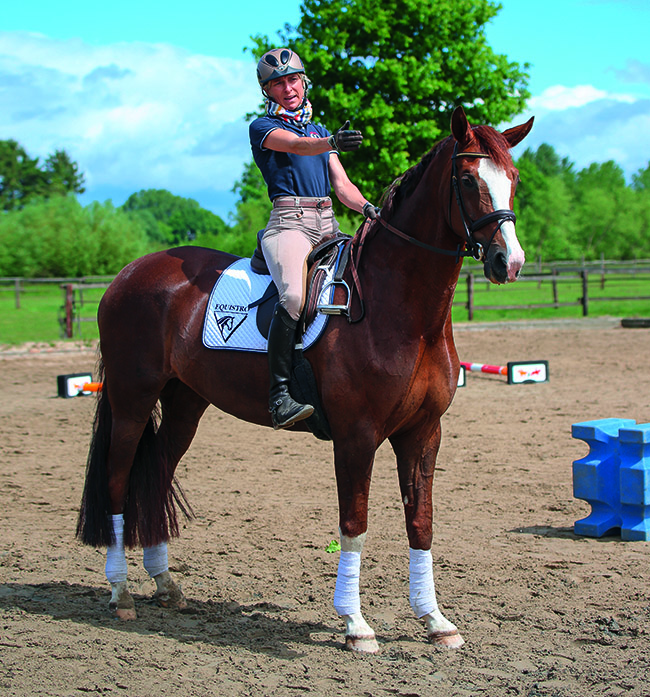
In order to give the correct aids, I need to first understand how and why I am riding an exercise.
Building a Good Relationship
If I want to build unity with a horse, I need to listen really deeply and get on the same wavelength with him. A certain inner attitude is required to build a positive relationship. The power of positive thinking will carry over to the horse, and so will the power of negative thinking. I can only build a close relationship with my horse if I like him and I show him that.
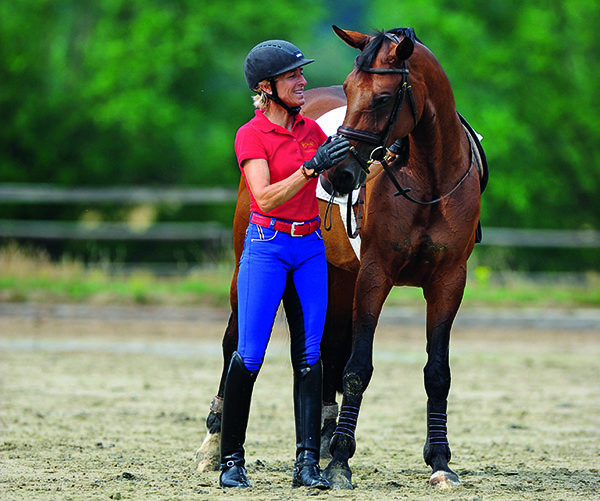
My mare SAP Escada FRH has a strong character and is very refined and sensitive.
Each horse has an entirely individual personality, just as we humans do. One personality type appeals to me more, another less. After some years, I know as a rider which types of horses I prefer, and which less, so I look for those that are a good fit for me. Still, it takes a while until I can really know the character of a horse. I’ll have to live with some quirks and characteristics I may not prefer. However, I always try to have a positive influence on the horse’s personality.
Through deliberate training, bad habits can become less pronounced but having said that, I must never allow myself to believe that I will be able to change the horse’s essential character, which, I could not do if I wanted to – for example, a horse that tends toward “laziness” and would rather not try too hard.
Empower Your Horse’s Personality
To deliberately develop the horse’s personality within his potential means to notice his personality, understand it, and cherish it: notice just how this creature is – with his strengths and his weaknesses. As such, I must not suppress his personality for any reason. This advice, too, was passed down to me from my dad. I need to completely take my cues from the horse, listen deeply, and remain very open to what comes forth.
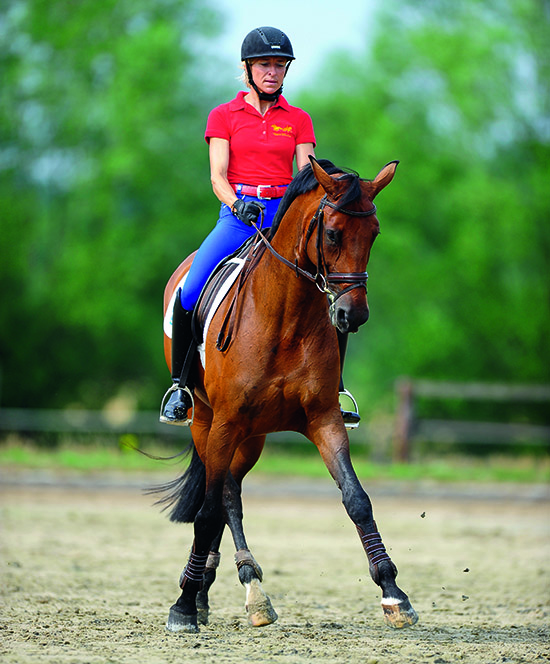
Highest concentration in half-pass.
With a shy horse, it can certainly take a while before he trusts you enough to show himself. In this case, I need to practice patience and not pressure him with too high expectations. I need to find out what gives him pleasure and which activities and tasks allow him to relax. By accomplishing this, I’ve already achieved a lot. In contrast, with a confident horse, the challenge lies in maintaining and developing his significant motivation, while at the same time establishing a conscious basic obedience. My mare Escada is a good example. She is really ambitious with lots of courage and confidence, but at the same time has the tendency, especially in dressage, to be too independent from me. Since she already knows – for the most part – which element follows which in the test, she doesn’t need me to provide the aids at all and would prefer to self- confidently anticipate every element of the test. It took a long time and many attempts at dressage tests until she finally learned to wait for my aids, and we continue to patiently work on this. The balancing act lies in the fact that I want to cultivate autonomy in my horses and I don’t want to suppress their willingness to perform, but at the same time, I cannot just be the “passenger.” They must give me their complete attention, so that we are together in the same moment, concentrating on the same thing.
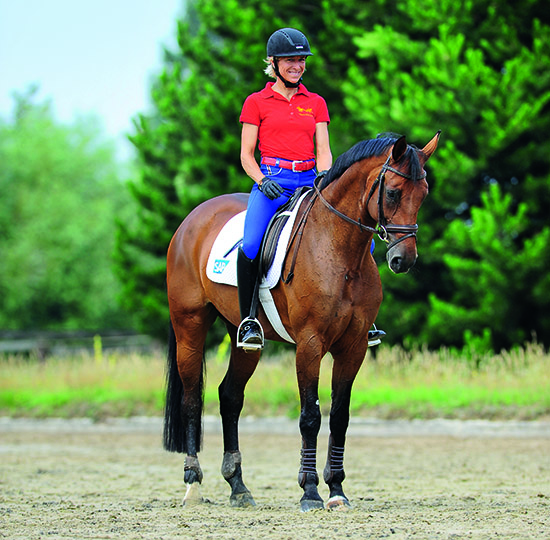
SAP Escada FRH learns how to wait at the halt.
With Escada, I got to that point by often taking her to dressage competitions so that she would get familiar with what is expected there. It also turned out to be good for her to have the experience of completing a dressage test and not automatically going cross -country the next day. This helped her relax more and develop an inner calm. When riding a dressage test, I direct my thinking and aids very strongly onto the element we’re doing in the moment. However, I also need to be ready to think about the correct execution of the next movement five to six seconds ahead of time. This means, the next movement is always already in my head. This can potentially cause a very refined , sensitive horse to anticipate. Should I punish a horse for thinking independently? No! I must, however, correct the horse consistently and with the necessary calmness, and have patience. Horses also learn through regular repetition and persistent practice. It is important to always end with a good experience.
Would you like to read more about Ingrid? There are lots of interviews and training sessions right here just click the link and be amazed!

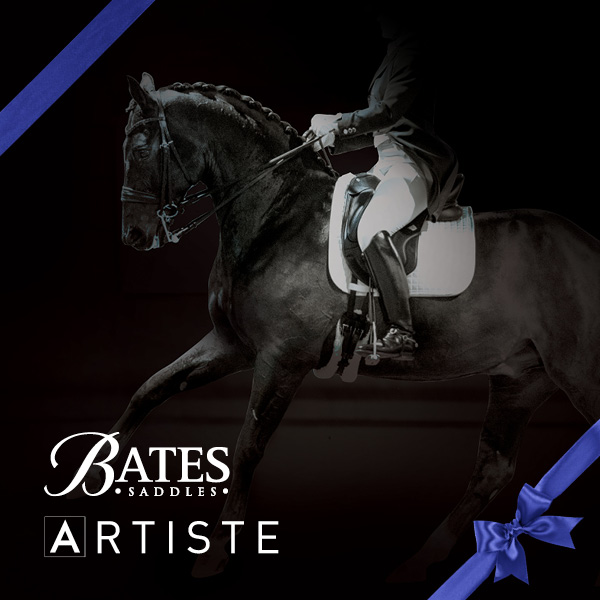
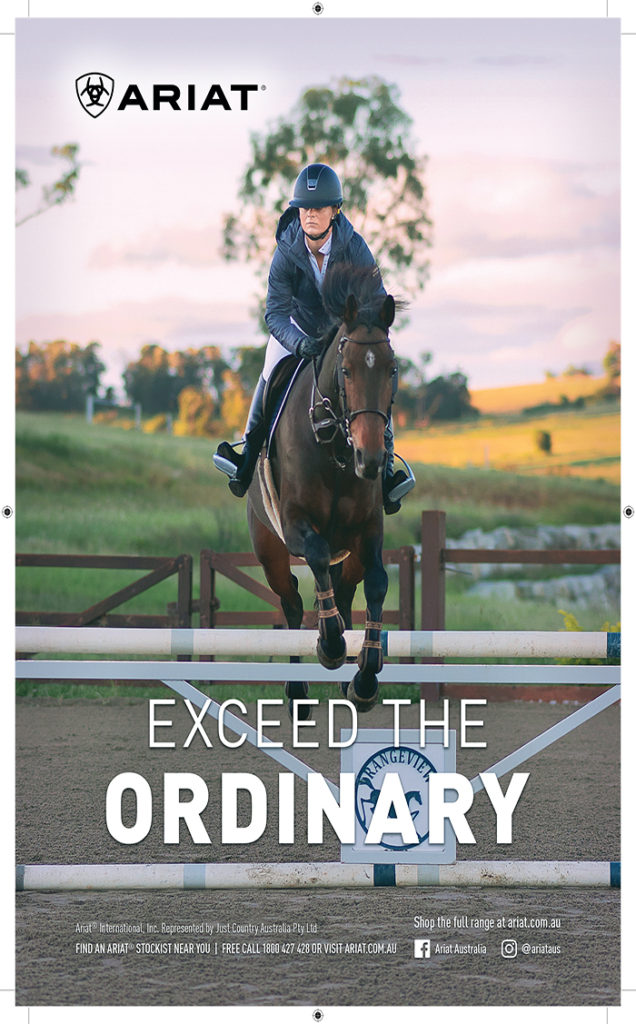
Ingrid is so inspirational and it is an absolute pleasure to read through this extract from her book. I am off to source a copy to continue reading! Thank you for sharing it.
Another of her books to add to my collection. Applying many of her training principles has changed my horses drastically. My gelding went from being hit or miss (50% to 75% – the high scores were all negative tense activity with a ticking time bomb feel) in the dressage to consistent and relaxed high 60s and low 70s and getting better and better. Highly recommend.
I remember when in the UK back in the 60’s when Robert Hall suddenly remembered that his wife would have to jump when competing at Aachen in Grand Prix, and a hurdle was dragged into the hall and they flew over it.
I had to do the same thing wehen competing in America. i tried to hitch up my stirrups on my walk out of the arena – my horse thoroughly enjoyed it too.
Wonderful clip from Ingrid’s book. It all makes sense what she says (makes a change from what some trainers/riders say). Looking forward to buying a copy of her book.
I have Eventers and dressage horses
I’m in the process of rehabilitating an ex-racehorse who’s been carrying injuries for a long time. He’s finally at the point where I can get on & commence some basic training. This is one of the best starting points of reference I could have found.
Great